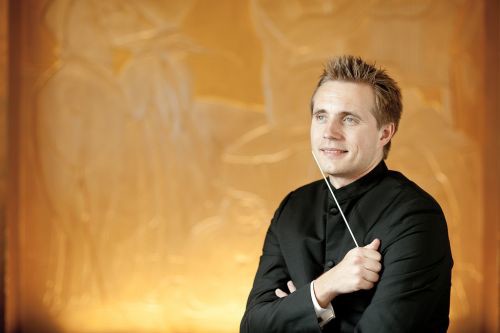 United Kingdom Mahler, Richard Strauss, Elgar: Timothy Jackson (horn), Royal Liverpool Philharmonic Orchestra/Vasily Petrenko (conductor), Guild Hall, City of Preston, 9.3. 2014 (MC)
United Kingdom Mahler, Richard Strauss, Elgar: Timothy Jackson (horn), Royal Liverpool Philharmonic Orchestra/Vasily Petrenko (conductor), Guild Hall, City of Preston, 9.3. 2014 (MC)

Mahler: Blumine
Richard Strauss: Horn Concerto No. 2
Elgar: Symphony No. 2
Maestro Petrenko opened this Sunday afternoon concert at Preston Guild Hall with Mahler’s Blumine (Flower Piece) a score with a convoluted history now serving as a single movement tone poem. Originally written for a play entitled Der Trompeter von Säkkingen, Blumine became the second movement Andante of Mahler’s First Symphony and was then rejected by the composer. Mahler wasn’t a bad judge and when compared to the composer’s greatest inspirations the orphaned score pales by significance yet as stand-alone work there is still much to enjoy. Blumine is part of the Liverpool Phil’s repertory and I saw Vladimir Ashkenazy conduct the score at the Philharmonic Hall in 2010. It’s a difficult piece to successfully pull off located right at the start of a concert before the players are settled into their stride. Past performances I’ve heard of Blumine including the one by Ashkenazy were in fear of grinding to a halt, but this was not the case here with Petrenko maintaining splendidly controlled tempi. To have raised the memorability the interpretation would have benefited from additional intensity and a touch more poetry. Overall it was a creditable performance from the orchestra with string and woodwind evoking dark woodland murmurings, and the lyrical solo trumpet was a particular highlight.
Constructed using some twelve feet of tubing wound into a coil with a flared bell the French horn demands a ritual of rotating the instrument together with the occasional removal of detachable parts to expel the spit. On top of all that it’s played with the right hand shoved inside the bell. It takes special players to manage all this and at orchestral concerts if any instrument in an orchestra is going to stand out it’s invariably the horn for over-blowing or poor intonation. Thankfully this is not a problem experienced by the Liverpool Philharmonic horn section these days. Richard Strauss would have undoubtedly been familiar with this problematic instrument as his father Franz was principal horn at the Court Opera, Munich serving for 42 years. Strauss was a mere teenager when he wrote his First Horn Concerto; his Second Horn Concerto came some sixty years later. Playing Strauss’s Second Horn Concerto the orchestra’s principal horn Timothy Jackson, a Preston boy, showed what an impressive exponent he is with the numerous technical and artistic challenges presented by this exacting instrument. Fully exposed right at the start of the Concerto with an extended passage the soloist maintained remarkable timing and breath control throughout. Strauss had a villa in the Bavarian town of Garmisch and in the dreamy second movement Andante con moto it was easy to imagine stunning Alpine scenery. Throughout the accomplished Jackson was eminently comfortable with Strauss’s forthright lyricism and his warmly expressive performance deserved the enthusiastic reception given by the Preston audience.
With his recent recordings of Shostakovich and Rachmaninov symphonic cycles with the Liverpool Phil, Maestro Petrenko has demonstrated his prowess with large scale orchestral works. I hadn’t heard him conduct Elgar’s music, although I know he is no stranger to the two symphonies. Elgar’s Symphony No. 2 in E flat major was the main work of the evening, written in 1911 encouraged by the great success of the First Symphony at its premiere some three years earlier. Dedicated to the memory of then recently deceased King Edward VII many music writers consider the Second Symphony to be the greater of the two owing to its increased complexity and its more personal character. I’m not sure audiences necessarily agree as the E flat major score doesn’t overtly demonstrate the same level of adventurous drama as its predecessor. Petrenko and his Liverpool players gave the work their full concentration in an unaffected performance. Amid the gathering storm clouds of the opening movement Allegro vivace e nobilmente the tempi felt especially well judged and the power given to the climaxes was striking. Able to maintain its unity and bloom throughout their long and demanding passages the string section has become a real force to be reckoned with. Especially memorable was the extended passage to close the second movement Larghetto containing an almost unbearable poignancy and intense intimacy. Nevertheless, I’m not sure Petrenko adequately gauged all the varying and often bewildering moods of Elgar’s magnificent writing, failing to penetrate right to the shadowy core of the music.
Michael Cookson